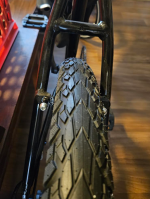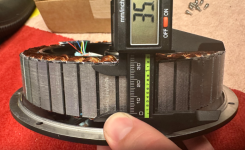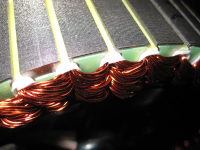ebike4healthandfitness
10 kW
- Joined
- May 19, 2012
- Messages
- 831
Brakes....what type/design of clamp on the rim brakes is the best for the rear of an ebike that is running a 3" wide tire on a 40mm internal width rim?
Is there a specific brake you would recommend...link please? Pads/shoes are another discussion but that can wait.
Potential examples include V-brakes (Shimano trade marked term), Linear-pull brakes or direct-pull brakes that use a "noodle" and a "bellows" by other manufacturers, and Center Pull Cantilever brakes. I only mentioned the V-Brake/Cantilever type design because I think those will be required to clear my tire...please correct me if I am mistaken.
I plan to try rim brakes on the rear of my ebike if I find a steel frame that has the mounting capability for rim brakes in the rear. Based on what I have read so far, the Shimano V-brakes seem to be the best option for a mountain bike with wider tires. Only reason I said "Shimano" is because Shimano has trade marked the "V-brake" terminology...there are a lot of manufacturers that produce the same design.
Below is an example of the V-brake (shimano)/linear pull brakes
View attachment 352689
Below is an example of center pull cantilever brakes:
View attachment 352690
So the only real restriction on my donor bike is it needs to be capable of accepting a 1 1/8 threadless steerer so I can install a decent suspension fork and I plan to run a 180mm disc brake in the front...only reason I am not going with a larger disc is my fork has a maximum 180mm disc.
I prefer a steel frame but it is not absolutely mandatory and a square taper bottom bracket is preferred just so more crank arm lengths are readily available but it is not absolutely mandatory either.
Bullfrog, The chances of finding a bike with rim brake mounts for 24" rim and also able to mount 3" wide tires is probably slim to none.









